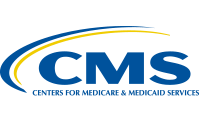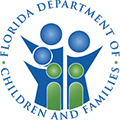Understanding PTSD
What does PTSD Look like?
There are many negative events that may occur in one’s life that can be difficult to cope with. We all experience losses of various types at one time or another, whether it’s the loss of a relationship or loss through death of a loved one. Many people experience the loss of a job, school failure, the inability to follow a certain career path or numerous other events that can create a sense of sadness, depression, or feeling unable to act normally for a period of time. However, we are essentially “hard wired” to cope with certain negative life events that are relatively common. Thus, while we may mourn, grieve, become sad, or even go through a bought of short-lived depression, we eventually find a way to cope and move on.
Other types of events are ones the majority of people do not experience. For example, combat, rape, being in a plane or automobile crash, surviving a natural disaster, or living through a genocide. These are occurrences that we are not “hard-wired” to cope with and more often than not have not observed anyone before us being forced to adjust to. These events are considered traumas and the reactions to them can be quite different for each individual.
After experiencing a traumatic event or life-threatening situation or witnessing a loved one go through one, it is not uncommon to have intrusive upsetting memories of the trauma, be easily startled, overly jumpy, or have trouble sleeping.
If you have undergone an event such as the ones listed here, and are experiencing some of these symptoms to the point they are beginning to interfere with your life, you may have Post-traumatic stress disorder (PTSD). At North Tampa, we know that it may seem like your entire life is out of control and that you have no hope that anything can be done to improve it in the future, don’t give up. Contact us, as we are here to help.
Statistics
Statistics on PTSD
While the experience of a trauma is not a rarity, this doesn’t mean that everyone exposed to a traumatic event will develop PTSD. Estimates suggest as many as 50% of women and 60% of men undergo at least one trauma in their lifetimes. The types of traumas differ by gender, with men being more likely to go through combat, accidents, physical attacks, disaster, serious injury, or to witness a death, while women are more likely to experience rape and childhood sexual assault. Yet though at least half of the U.S. population goes through a trauma over the course of their lifetimes, the number who go on to develop PTSD is far smaller.
Lifetime prevalence rates for individuals in the U.S. suffering from PTSD has been estimated at 7-8%, which amounts to approximately 5.2 million people affected by the disorder each year. Men are less likely to develop the disorder over the course of their lifetime (5%) compared to women (10%).
Causes of PTSD
What are the Causes and Risk Factors of PTSD?
While there is no single cause that has been identified for PTSD, research indicates that certain factors play a significant role in the development of the disorder. These include:
Genetic: Some temperamental factors, considered to be inborn genetically determined qualities, have been linked to the development of PTSD, such as behavioral inhibition, neuroticism, emotional reactivity, and introversion. The preference for a greater levels of arousal and a high activity level appears to be a protective factor related to the development of the disorder.
Physical: Evidence points to a physiological predisposition that increases the risk of developing PTSD after being exposed to a traumatic event. This doesn’t mean that each individual with such a predisposition will always develop PTSD, however. Environmental factors and other individual factors such as temperament and personality characteristics interact with the predisposition and influence whether the disorder manifests. Additional research shows that people who develop PTSD display decreased levels of cortisol and increased levels of epinephrine and norepinephrine. These chemicals are connected to the fight or flight response which occurs in response to fear.
Environmental: Past experiences of trauma plays an important role in the development of PTSD. Those who have a long term history of life stress and trauma are at greater risk for the development of PTSD following a major trauma than those without a similar history. It is possible that these experiences accumulate, making the individual more prone to a subsequent traumatic experience.
Risk Factors: Those who have pre-existing depression or anxiety disorders appear to be at increased risk for developing PTSD than those without such a history. It is unclear if these conditions may have common causes shared with the development of PTSD or whether these two conditions are actually causally related to PTSD.
Signs and Symptoms of PTSD
Learn More About the Signs and Symptoms of PTSD
There are three main categories of PTSD symptoms. They include:
- Re-experiencing the event
- Intrusive, distressing memories
- Flashbacks
- Nightmares
- Reminders of the event trigger feelings of distress
- Physical reactions to reminders of the event (e.g. heart palpitations, hyperventilating, nausea, muscle tension, hot flashes)
- Avoidance of reminders of the trauma
- Avoidance of anything that remind you of the trauma
- Being unable to remember important aspects of the trauma
- Decreased interest in activities and life in general
- A sense of detachment from others
- Feeling like the future is limited in terms of opportunities or life span
- Increased anxiety and increased autonomic arousal
- Increased anxiety and emotional arousal
- Trouble falling asleep or remaining asleep
- Irritability or anger outbursts
- Trouble concentrating
- Hypervigilance, or constantly scanning the environment for danger
- Being easily startled or feeling nervous or jumpy
- Survivor guilt
Effects of PTSD
Understanding the Effects of PTSD
There are a number of effects associated with PTSD including:
- Severe depression
- Alcohol, prescription, illicit drug abuse to self-medicate, leading to an addiction
- Eating disorders
- Feelings of emptiness or feeling numb emotionally
- Long-term difficulty of experiencing deep wave sleep
- Difficulty concentrating
- Feeling hopeless over the future
- Feeling a sense of helplessness to change the future
- Suicidal thoughts and behaviors
- Cardiovascular disease
- Chronic pain
- Impaired immune system, resulting in the development of medical conditions
- Anger outbursts, aggression, violence (potentially caused by flashbacks)
- Fear of loss of control, leading to social avoidance
- Difficulties relating to family members
- Marital problems
- Lowered productivity at school or work
- Job loss
- Isolation
- Domestic abuse
- Financial problems
Co-Occurring Disorders
PTSD and other Co-Occurring Disorders
As many as 80% of individuals with PTSD also suffer from another psychiatric or substance abuse disorder. A significant number of these individuals experience 3 or more additional psychiatric diagnoses. Co-occurring conditions include:
- Anxiety
- Panic disorder
- Obsessive compulsive disorder
- Bipolar personality disorder
- Depression
- Bipolar disorder
- Substance abuse
- Conduct disorder in childhood or adolescence (seen more frequently in males than females)
- Psychosis











